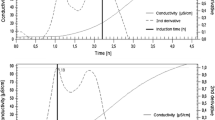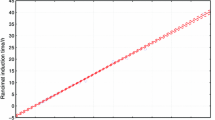Abstract
Determination of oxidative stability of different edible oils, fats, and typical fat products was made using the Rancimat method and the active oxygen method. Induction periods (IP) were recorded under controlled conditions at 110, 120, and 130 ± 0.1°C for all products and over a range of 100–160°C for selected fats. A general oil stability evaluation industrial shortenings and vanaspati to be the most stable fats, with IP ranging from 10.00 to 15.47 h. Margarine and butter samples (IP, 4.98–6.04 h) were also found to show fair oxidative stability. Among the extracted and open-market salad-grade cooking oils, rapeseed oil (IP, 4.10 h) and soybean oil (IP, 4.00 h) showed the highest oxidative stability, whereas Salicornia bigelovii oil (IP, 1.40 h) was the least stable. The induction periods of typical fat products ranged from 2.59 to 9.20 h. CV for four determinations were <5.2% for shortening and vanaspati products and <4.3% for various vegetable oils, margarine, butter, and typical fat products. Rancimat IP values obtained at 110, 120, and 130°C were 40–46, 20–25, and 9–13% of active oxygen method values, respectively, corresponding to a decrease in Rancimat IP by a factor of 1.99 with each 10°C increase in temperature. Similarly, in the temperature range 100–160°C, an increase of 10°C decreased the Rancimat IP by a factor of 1.99
Similar content being viewed by others
References
Sako, F., Oxidative Stability of Perilla Oil and Its Use in French Dressing and Mayonnaise, New Food Ind. 43:25–31 (2000).
Tian, K., and P.K. Dasgupta, Determination of Oxidative Stability of Oils and Fats, Anal. Chem. 71:1692–1698 (1999).
Chu, Y.-H., and Y.-L. Kung, A Study on Oxidative Stability of Vegetable Oil Blends, Shipin Kexue (Taipie) 24:389–397 (1997).
Min, D.B., and H.-O. Lee, Chemistry of Lipid Oxidation; 30 Years of Progress, in Flavor Chemistry: Industrial and Academic Research, edited by S.J. Risch and C.T. Ho, American Chemical Society Symposium Series, American Chemical Society, Washington, DC, 2000, Vol. 756, pp. 175–187.
Min, D.B., Lipid Oxidation of Edible Oils and Fats, in Food Lipids: Chemistry, Nutrition & Biotechnology, edited by C.C. Akoh and D.B. Min, Food Science and Technology Series, Marcel Dekker, New York, 1998, Vol. 88, pp. 283–296.
Lampi, A.M., V. Piironen, A. Hopia, and L. Koivistoiinen, Characterization of Oxidation of Rapeseed and Butter Triglycerols by Four Analytical Methods, Food. Sci. Technol. 30: 807–813 (1997).
Frankel, E.N., Lipid Oxidation: Mechanism, Products, and Biological Significance, J. Am. Oil Chem. Soc. 61:1908–1917 (1984).
Miyashita, K., K. Kanda, and T. Takagi, A Simple and Quick Determination of Aldehydes in Oxidized Vegetable and Fish Oils, 68:748–751 (1991).
Sherwin, E.R., Oxidation and Antioxidants in Fats and Oils Processing, 55:809–814 (1978).
Shuqing, S., Oxidative Stability of Fats and Oils, Shipin Yu Fajiao Gongye 25:20–22, 35 (1999).
Hill, S.E., Comparison: Measuring Oxidative Stability, INFORM 5:104–109 (1994).
Gorden, M.H., and E. Mursi, A Comparison of Oil Stability Based on the Metrohm Rancimat with Storage at 20°C, J. Am. Oil Chem. Soc. 71:649–651 (1994).
Isbell, T.A., T.P. Abbott, and K.D. Carlson, Oxidative Stability Index of Vegetable Oil in Binary Mixtures with Meadowfoam Oil, Ind. Crops Prod. 9:115–123 (1999).
Official Methods and Recommended Practices of the American Oil Chemists Society, 4th edn. American Oil Chemists’ Society, Champaign, 1989.
Metrohm Application Bulletin No. 204/1e, Oxidative Stability of Oil and Fats—Rancimat Method: Metrohm AG, Herisau, Switzerland, 1993, p. 2.
Laubli, M.W., P.A. Bruttle, and E. Schalach, A Modern Method for Determining the Oxidative Stability of Fats and Oils, Int. Food Marketing Technol. 1:16–18 (1988).
Reynhout, G., The Effect of Temperature on Induction Time of a Stabilized Oil, J. Am. Oil Chem. Soc. 68:983–984 (1991).
Hasenhutt, G.L., and P.J. Wan, Temperature Effect on the Determination of Oxidative Stability with Metrohm Rancimat, 69:525–527 (1992).
Yoshikazui, T., and Y. Minoru, Hydrogenation of Edible Oils, Nihon Yukagakkishi 48:1141–1149 (1999).
Muammeri, K., T. Muammer, A. Tekin, M. Kucuk, H. Karabacak, and I. Javi-dipour, The Effect of Hydrogenation on Some Chemical Properties of Soybean Oil, Turk. J. Agric. For. 23: 541–547 (1999).
Wataru, M., Interesterification of Fats and Oils, Nihon Yukagakkishi 48:1151–1159 (1999).
Pritchard, J.L.R., Analysis and Properties of Oil Seeds, in Analysis of Oil Seeds, Fats and Fatty Foods, edited by J.B. Rossell and J.L.R. Pritchard, Elsevier Applied Science, New York, 1991, p. 88.
Agriculture Handbook No. 8-4: Composition of Foods, U.S. Department of Agriculture, Government Printing Office, Washington, DC, 1979.
Anwar, F., M.I. Bhanger, M.K.A. Nasir, and S. Ismail, Analytical Characterization of Salicornia bigelovii Seed Oil Cultivated in Pakistan, J. Agric. Food Chem. 50:4210–4214 (2002).
Glenn, E.P., J.W. Oleary, M.C. Watson, T.L. Thompson, and R.O. Kuehl, Salicornia bigelovii: An Oilseed Halophyte for Seawater Irrigation, Science 251:1065–1067 (1991).
Stauffer, C.E., Fats & Oils, Eagan Press, St. Paul, MN, 1996, p. 20.
Author information
Authors and Affiliations
Corresponding author
About this article
Cite this article
Anwar, F., Bhanger, M.I. & Kazi, T.G. Relationship between rancimat and active oxygen method values at varying temperatures for several oils and fats. J Amer Oil Chem Soc 80, 151–155 (2003). https://doi.org/10.1007/s11746-003-0668-2
Received:
Accepted:
Issue Date:
DOI: https://doi.org/10.1007/s11746-003-0668-2




